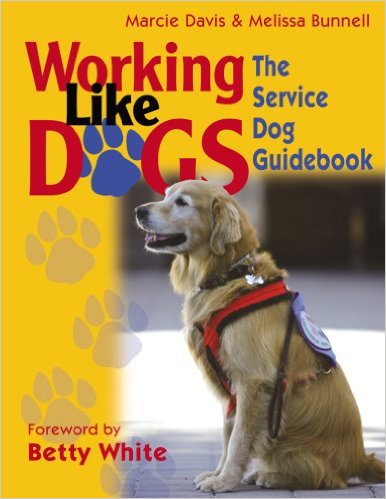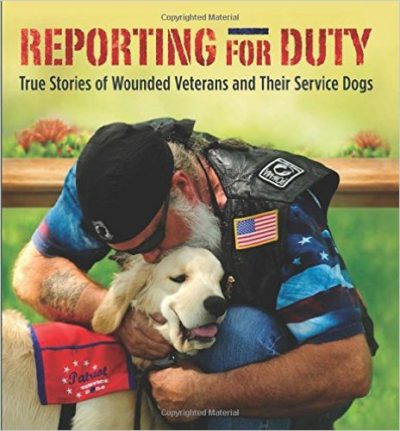
James J. McDonald, Jr., managing partner, Fisher & Phillips, LLP wrote a good summary about the March 15 changes impacting U.S. assistance dogs. His summary is listed below. It’s long but I found it to be very informative.
Regulations issued in 1991 following the enactment of the Americans with Disabilities Act required that public accommodations (which include restaurants, hotels, retail establishments, theaters, and concert halls) modify their policies, practices, or procedures to permit the use of a service animal by an individual with a disability.
Essentially this means that service animals accompanying persons with disabilities have to be admitted to establishments with policies that otherwise exclude pets or other animals.
When the ADA was enacted, most service animals were “seeing-eye” dogs that assisted blind or sight-impaired persons. In most cases, these dogs were highly trained and, because of their extensive training, were not likely to create a nuisance or a sanitary problem.
Over time, however, a variety of species came to be characterized by their owners as service animals, including pigs, horses, monkeys, snakes, lizards, birds, and rodents. Also, dogs and other animals that merely provide emotional comfort to their owners also have been characterized as service animals.
This proliferation of creatures claimed to be service animals has posed obvious problems for many restaurants and hotels in terms of safety, sanitation, and disturbance of other guests. Until now, however, proprietors were largely powerless to bar these types of animals from their establishments.
The U.S. Department of Justice has issued new regulations effective March 15, 2011, however, which will substantially limit the types of animals that will qualify as service animals under the ADA.
First, only dogs (and miniature horses in some cases) will qualify as service animals under the new regulations. “Other species of animals, whether wild or domestic, trained or untrained,” will not qualify. The new regulations, however, do not place limits on breed or size of dog.
Second, the dog must be “individually trained to do work or perform tasks for the benefit of an individual with a disability, including a physical, sensory, psychiatric, intellectual, or other mental disability.” The regulations go on to state that the work or tasks performed by the service animal must be directly related to the handler’s disability. Examples of work or tasks set forth in the regulations include:
a. Assisting sight-impaired persons with navigation or other tasks
b. Alerting hearing-impaired persons to the presence of people or sounds
c. Providing nonviolent protection or rescue work
d. Pulling a wheelchair
e. Assisting an individual during a seizure
f. Alerting an individual to the presence of allergens
g. Retrieving items such as medicine or the telephone
h. Providing physical support and assistance with balance and stability to individuals with mobility impairments
i. Helping persons with psychiatric and neurological disabilities by preventing or interrupting impulsive or destructive behaviors
Under the new regulations, the mere “provision of emotional support, well-being, comfort, or companionship does not constitute work or tasks” for purposes of the definition of service animal. Thus, animals that provide only comfort or emotional support for their owners will no longer qualify as service animals.
For a dog to qualify as a service animal to an owner with a psychiatric disability under the new regulations, the dog must be trained to perform specific work or tasks. Examples given in the guidance accompanying the new regulations of tasks performed by psychiatric service animals include reminding the handler to take medicine, providing safety checks or room searches for persons with posttraumatic stress disorder, interrupting self-mutilation, and removing disoriented individuals from dangerous situations.
The guidance also states that a dog that is used to “ground” a person with a psychiatric disorder will qualify as a service animal if the dog has been trained: (1) to recognize that a person is about to have a psychiatric episode and (2) to respond by nudging, barking or removing the person to a safe location until the episode subsides.
The new regulations additionally clarify that “attack dogs” trained to provide aggressive protection of their owners will not qualify as service animals. The crime-deterrent effect of a dog’s presence, by itself, does not qualify as “work” or “tasks” for purposes of the service animal definition.
The new regulations also formalize prior Justice Department technical assistance addressing the use and handling of service animals. The regulations provide that a public accommodation may ask an individual with a disability to remove a service animal from the premises if the animal is not housebroken, or if the animal is out of control, and the animal’s handler does not take effective action to control it. (Ordinarily, the regulations state, a service animal shall have a harness, leash, or other tether, unless the person with a disability is unable to use a harness, leash, or tether or the use of such a device would interfere with the animal’s ability to perform its work or tasks.) If a service animal is removed for any of these reasons, the person with a disability must still be permitted to access the establishment’s goods, services, or accommodations without the animal being present.
The regulations also confirm that a public accommodation is not responsible for the care or supervision of a service animal.
The regulations provide that a public accommodation may not ask about the nature or extent of a person’s disability, but that it generally may make two inquiries to determine whether an animal qualifies as a service animal; it may ask: (1) if the animal is required because of a disability, and (2) what work or task the animal has been trained to perform. These inquiries may not be made, however, when it is readily apparent that the animal is a service animal, such as where a guide dog is guiding a blind person or a dog is pulling a wheelchair.
Furthermore, a public accommodation may not require documentation, such as proof that the animal has been certified, trained, or licensed as a service animal. Nor may a public accommodation require a person with a disability to pay a surcharge for a service animal, even if it applies such a surcharge for pets.
These regulations will not apply to landlords or airlines, which are governed by the Fair Housing Act and the Air Carrier Access Act, respectively. It is also not yet clear that these regulations, and particularly the definition of a service animal, will be applied by courts to cases brought under Title I of the ADA which covers employment.
A good argument may be made, based on existing case law, that a stricter standard would apply under Title I. Unlike under Title III, where a dog must be allowed onto the premises if it qualifies as a service animal and does not leave a mess or cause a serious disturbance, an employee under Title I of the ADA is entitled only to such accommodations as are necessary to enable him or her to perform the essential functions of the job.
An employee, therefore, will likely need to show that the presence of a service animal is needed for the employee to be able to perform his or her essential job duties. An animal that provides only comfort or emotional support to an employee, but that is not needed in order for the employee to be able to work, will not likely qualify as a reasonable accommodation under Title I of the ADA.
These new regulations give long-needed clarity to hotels, restaurants, retailers, and other public accommodations regarding which animals must be allowed as service animals, and under what circumstances. No longer will these establishments need to allow patrons to bring exotic, dangerous, disruptive, or unsanitary animals with them as purported “service animals.”
James J. McDonald, Jr. is managing partner of the Irvine, Calif. office of the national labor and employment law firm Fisher & Phillips LLP (www.laborlawyers.com).





